New Boston Historical Society
New Boston, New Hampshire
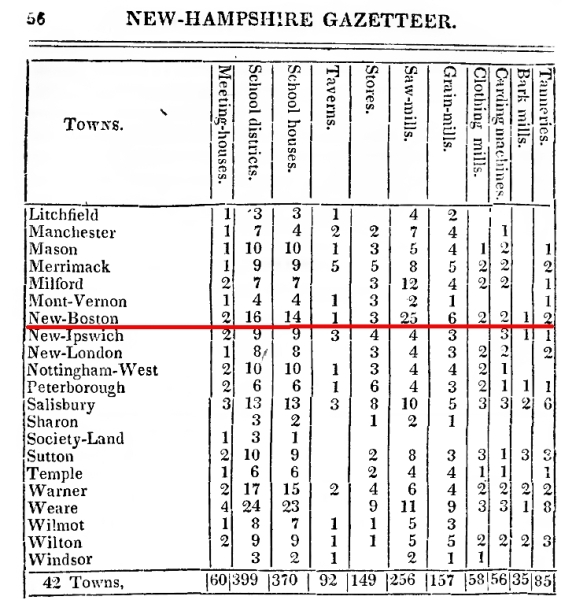
Towns of Hillsborough County, from the 1823 Gazetteer
New Boston in 1823
The Historical Society recently received from Sylvia Chancey the gift of an interesting book, "A Gazetteer of the State of the New Hampshire", published by John Farmer and Jacob B. Moore in 1823. That was a very long time ago; there were only 24 United States at the time, King George III had just died, and Ludwig von Beethoven was busy composing his 9th Symphony.The Gazetteer included "Statistical Tables" of data about all New Hampshire towns. At the top of this page are some of the statistics for Hillsborough County in 1823. Note that New Boston had 14 school houses, and there were 25 saw mills — more than any other town in the county! (Boscawen and Goffstown, listed on the previous page in the Gazetteer, had 17 saw mills each.)
In 1823, the population of New Boston was 1,686 — double that of Manchester's 761 people. (This was before Manchester's Amoskeag mills became truly successful.) There were 1,375 people in Bedford, 2,173 in Goffstown, and 2,781 in Weare.
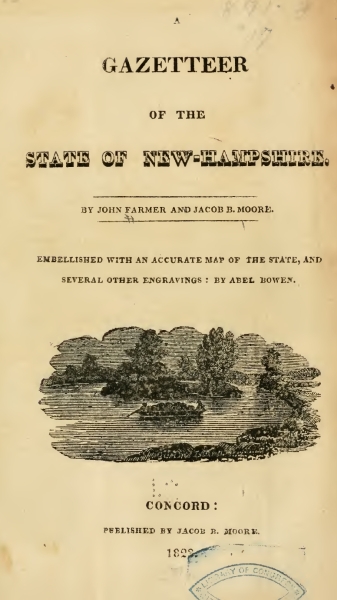
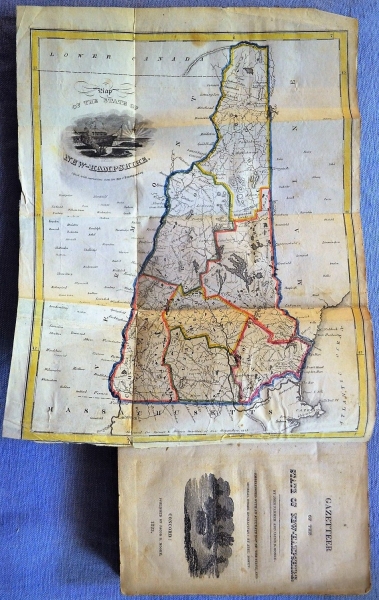
The Gazetteer
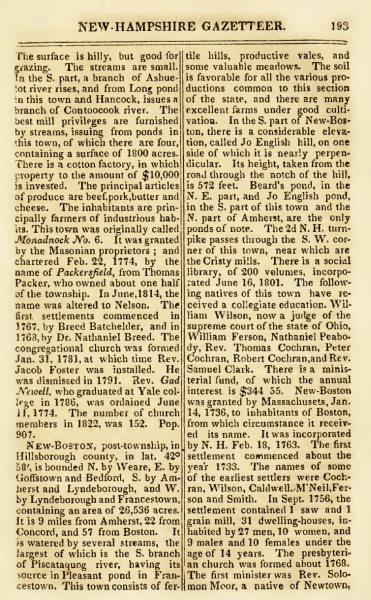 The 1823 Gazetteer describes old New Boston at its very peak.
As we discuss in Leaving New Boston, our town's population began to decline after 1830 and did not recover until 1970!
The 1823 Gazetteer describes old New Boston at its very peak.
As we discuss in Leaving New Boston, our town's population began to decline after 1830 and did not recover until 1970!
What was New Boston like in 1823? The page reproduced to the left includes Nelson NH and New Boston. Let's skip to the New Boston entry:
New Boston is "watered by several streams, the largest of which is the S. branch of the Piscataquog river, having its source in Pleasant pond in Francestown. This town [New Boston] consists of fertile hills, productive vales, and some valuable meadows. The soil is favorable for all the various productions common to this section of the state, and there are many excellent farms under good cultivation.
"In the S. [south] partof New Boston, there is a considerable elevation, called Jo English hill, on one side of which it is nearly perpendicular. Its height, taken from the road through the notch of the hill, is 572 feet.
The 2nd N.H. turnpike passes through the S.W. corner of this town, near which are the Cristy mills. There is a social library, of 200 volumes, incorporated June 16, 1801."
You may read the entire Gazetteer on-line at "A gazetteer of the state of New-Hampshire".
For more New Boston history related to the table at the top of this page, see our pages about meeting houses, school houses, the tavern, general stores, and mills.
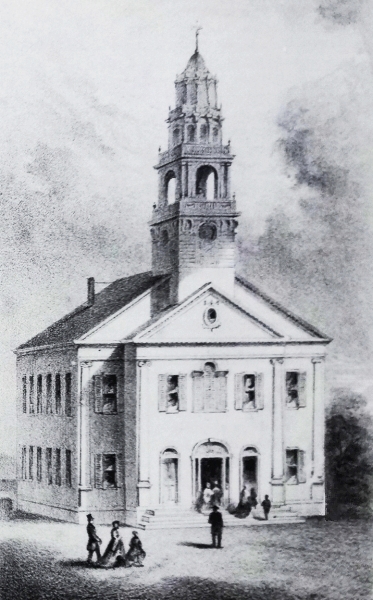
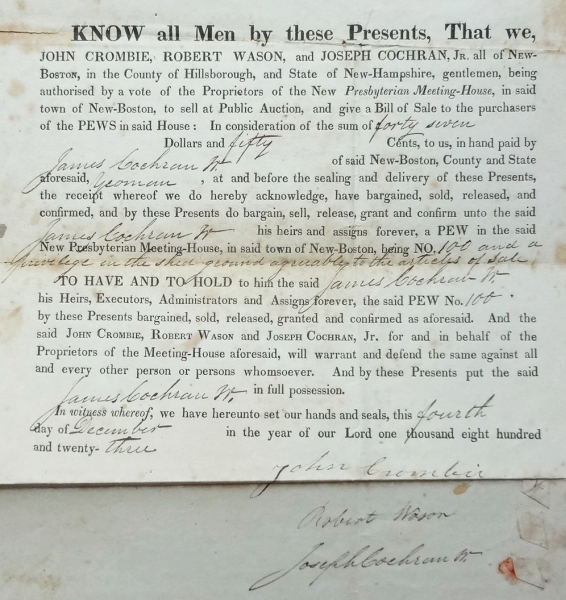
New Boston's second meetinghouse, the "Church on the Hill", was dedicated on December 25, 1823.
Church pews in this Presbyterian Meetinghouse were sold for $20-$140 each, depending on location, to defray the costs of construction.
James Cochran Jr. chose a pew of medium price: $47.50 in 1823 dollars, or about $1,000 today.
